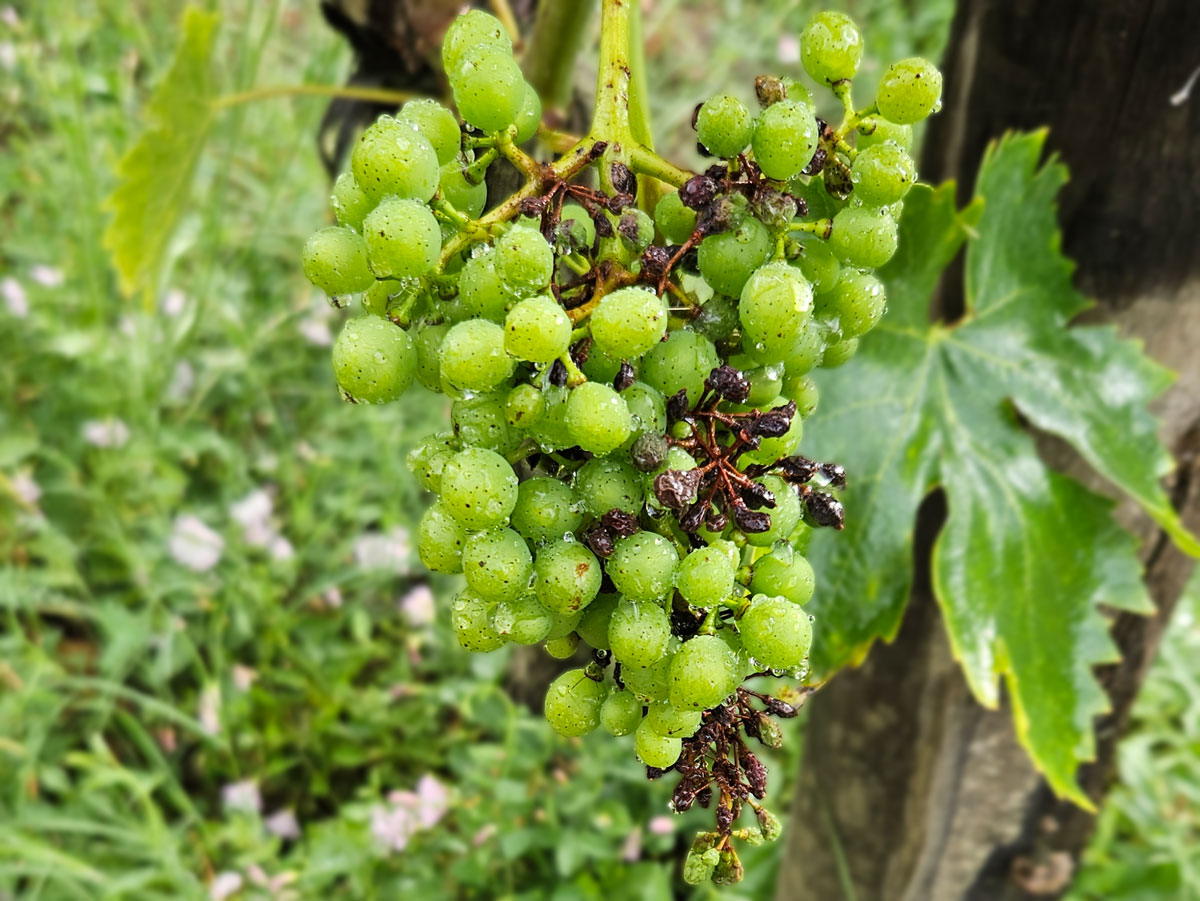When I walk between the vineyard rows this summer, I can’t bear to look. I get so sad to see all the withered berries desperately clinging to the bunches; therefore, I lower my eyes and look at the ground.
Due to downy mildew, an insidious fungus organism that attacked the vines at the beginning of the summer, the harvest of 2023 is anticipated to be the most limited one in my memory, with an estimated loss of a staggering 70%.
Downy mildew
The vine’s downy mildew, triggered by the pathogen Plasmopara viticola, is undeniably one of the most severe cryptogamic diseases that can plague a vineyard. It can attack every green organ of the vine, primarily the leaves, but it can also extend to the bunches, resulting in significant damage.
For infections to occur, it is necessary for at least a couple of rainy days, allowing a veil of water to linger on the leaf for several hours.
Once the infection has begun, there is an incubation period that can last up to two weeks before the first symptoms appear, depending on the weather conditions. The sporulation occurs under adequate thermo-hygrometric conditions, humidity, and high temperatures. This results in the characteristic white mold that signifies the fructification of the fungus.
Combating downy mildew in organic viticulture
Being organic restricts the use of plant protection products, as the highly potent pesticides commonly used in conventional agriculture are strictly forbidden. In organic viticulture, copper remains the only active ingredient truly effective against downy mildew, to which other additives can be added that enhance the effect of copper and/or limit its dosage.
Copper functions as a contact-based and preventive agent; therefore, its application on plant organs must be done before the fungus settles on the plant.
Copper sulfate is dissolved in water and then sprayed on the vines with an atomizer attached to the tractor.
What happened this year
The end of spring and the beginning of summer in 2023 were characterized by continuous and abundant rainfall, with nearly daily showers persisting from the beginning of May to the end of June and beyond. This combination of factors (heat, humidity, and continuous leaf wetness) created a perfect environment for the downy mildew to attack.
The copper-based treatments were not enough, as the relentless and constant rain effectively washed away the product that was sprayed on the vines.
Once the downy mildew took root on the leaves, it mercilessly attacked the bunches, causing the grapes to wither. Certain parts of the vineyard have suffered a bit more, particularly the Merlot vines for our IGT Monteficalle, and others a bit less, but the losses will surely reach at least 70%.

Could we have done something differently? Did we do something wrong? Undoubtedly, we underestimated the potential risk in its initial phase. However, the problem was often the opposite in recent years: drought. It has been so many years since I last witnessed the region being devastated by this phenomenon. Perhaps we struggled to get the timing of the treatments right. In cases like these, a delay of a couple of days is enough for the infection to spread.
Other colleagues, also organically run, managed to avoid this kind of loss, probably because they were timelier with treatments. Nevertheless, the entire region has been affected by this phenomenon, although to a lesser degree.
And now?
As for us in 2023, a drastic reduction in bottles produced is inevitable. Lorenzo and I must evaluate how to manage the limited quantity of grapes for our various labels.
As is commonly known, quality increases when production is minimal, as the few berries on the vine can fully benefit from all its nutrients. In short, very little wine but probably excellent wine!




